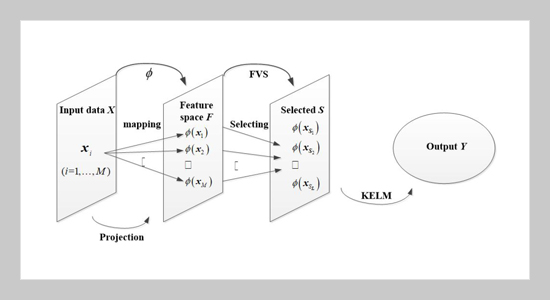REFERENCES
- [1] Ahmed A., Khalid M. (2019) A review on the selected applications of forecasting models in renewable power systems, Renewable and Sustainable Energy Reviews 100, 9-21. doi.org/10.1016/j.rser.2018.09.046
- [2] Sobri S., Koohi-Kamali S., Rahim N. A (2018) Solar photovoltaic generation forecasting methods: A review, Energy Conversion and Management, 156, 459-497. doi.org/10.1016/j.enconman.2017.11.019
- [3] Barbieri F., Rajakaruna S., Ghosh A. (2017) Very short-term photovoltaic power forecasting with cloud modeling: A review, Renewable and Sustainable Energy Reviews 75, 242-263. doi.org/10.1016/j.rser.2016.10.068
- [4] Tuohy A., Zack J., Haupt S E., et al. (2015) Solar forecasting: methods, challenges, and performance, IEEE Power and Energy Magazine, 13(6), 50-59.
- [5] Dolara A., Leva S., Manzolini (2015) Comparison of different physical models for PV power output prediction, Solar energy,119, 83-99. doi.org/10.1016/j.solener.2015.06.017
- [6] Pedro H. T. C., Coimbra C. F. M. (2012) Assessment of forecasting techniques for solar power production with no exogenous inputs, Solar Energy, 86(7), 2017-2028. doi.org/10.1016/j.solener.2012.04.004
- [7] Li Y. T., Su Y., Shu L. J. (2014) An ARMAX model for forecasting the power output of a grid connected photovoltaic system, Renewable Energy, 66, 78-89. doi.org/10.1016/j.renene.2013.11.067
- [8] Verzijlbergh R. A., Heijnen P. W., de Roode S. R. (2015) Alexander Los, Jonker H J. J. Improved model output statistics of numerical weather prediction based irradiance forecasts for solar power applications, Solar Energy, 118, 634-645. doi.org/10.1016/j.solener.2015.06.005
- [9] Voyant C., Notton G., Kalogirou S., et al. (2017) Machine learning methods for solar radiation forecasting: A review, Renewable Energy, 105, 569-582. doi.org/10.1016/j.renene.2016.12.095
- [10] Cervone G., Clemente-Harding L., Alessandrini S., et al. (2017) Short-term photovoltaic power forecasting using Artificial Neural Networks and an Analog Ensemble, Renewable energy, 108, 274-286. doi.org/10.1016/j.renene.2017.02.052
- [11] Yao X. S., Wang Z. S., Zhang H. G. (2019) A novel photovoltaic power forecasting model based on echo state network, Neurocomputing, 325, 182-189. doi.org/10.1016/j.neucom.2018.10.022
- [12] Leva S., Dolara A., Grimaccia F., et al. (2017) Analysis and validation of 24 hours ahead neural network forecasting of photovoltaic output power, Mathematics and computers in simulation, 131, 88-100. doi.org/10.1016/j.matcom.2015.05.010
- [13] VanDeventer W., Jamei E., Thirunavukkarasu G. S., et al, (2019) Short-term PV power forecasting using hybrid GASVM technique, Renewable Energy, 140, 367-379. doi.org/10.1016/j.renene.2019.02.087
- [14] Bouzerdoum M., Mellit A., Pavan A. M. (2013) A hybrid model (SARIMA–SVM) for short-term power forecasting of a small-scale grid-connected photovoltaic plant, Solar Energy, 98, 226-235. doi.org/10.1016/j.solener.2013.10.002
- [15] Eseye A. T., Zhang J. H., Zheng D. Y. H. (2018) Short-term photovoltaic solar power forecasting using a hybrid Wavelet-PSO-SVM model based on SCADA and Meteorological information, Renewable energy, 118, 357-367. doi.org/10.1016/j.renene.2017.11.011
- [16] Malvoni M., De Giorgi M. G., Congedo P. M. (2016) Photovoltaic forecast based on hybrid PCA–LSSVM using dimensionality reducted data, Neurocomputing, 211, 72-83. doi.org/10.1016/j.neucom.2016.01.104
- [17] Huang G. B., Zhu Q. Y., Siew C. K. (2006) Extreme learning machine: theory and applications, Neurocomputing, 70(1), 489-501. doi.org/10.1016/j.neucom.2005.12.126
- [18] Al-Dahidi S., Ayadi O., Adeeb J., et al, (2018) Extreme Learning Machines for Solar Photovoltaic Power Predictions, Energies, 11(10), 2725. doi.org/10.3390/en11102725
- [19] Shamshirband S., Mohammadi K., Yee L., et al, (2015) A comparative evaluation for identifying the suitability of extreme learning machine to predict horizontal global solar radiation. Renewable and Sustainable Energy Reviews, 52, 1031-1042. doi.org/10.1016/j.rser.2015.07.173
- [20] Tang P. Z., Chen D. Y., Hou S. (2016) Entropy method combined with extreme learning machine method for the short-term photovoltaic power generation forecasting, Chaos, Solitons & Fractals 89, 243-248. doi.org/10.1016/j.chaos.2015.11.008
- [21] Li J., Li D. C. (2016) Wind power time series prediction using optimized kernel extreme learning machine method, Acta Physica Sinica, 65(13), 33-42.
- [22] Davò F., Alessandrini S., Sperati S., et al, (2016) Post-processing techniques and principal component analysis for regional wind power and solar irradiance forecasting, Solar Energy, 134, 327-338. doi.org/10.1016/j.solener.2016.04.049
- [23] Dou C. X., Qi H., Luo W., et al, (2018) Elman neural network based short-term photovoltaic power forecasting using association rules and kernel principal component analysis, Journal of Renewable and Sustainable Energy, 10(4), 043501.
- [24] Baudat G., Anouar F. (2003) Feature vector selection and projection using kernels, Neurocomputing, 55(1-2), 21-38. doi.org/10.1016/S0925-2312(03)00429-6
- [25] Zhang Y., Wang J. (2015) GEFCom2014 probabilistic solar power forecasting based on k-nearest neighbor and kernel density estimator, 2015 IEEE Power & Energy Society General Meeting. IEEE, 1-5.
- [26] Hong T., Pinson P., Fan S., et al, (2016) Probabilistic energy forecasting: Global energy forecasting competition 2014 and beyond. doi.org/10.1016/j.ijforecast.2016.02.001
- [27] Ahmed Mohammed A., Aung Z. (2016) Ensemble Learning Approach for Probabilistic Forecasting of Solar Power Generation, Energies, 9(12), 1017. doi.org/10.3390/en9121017
















